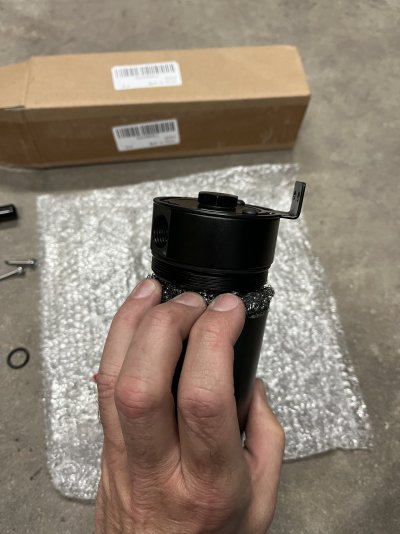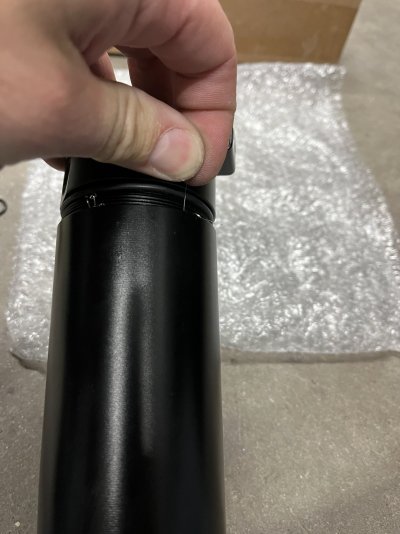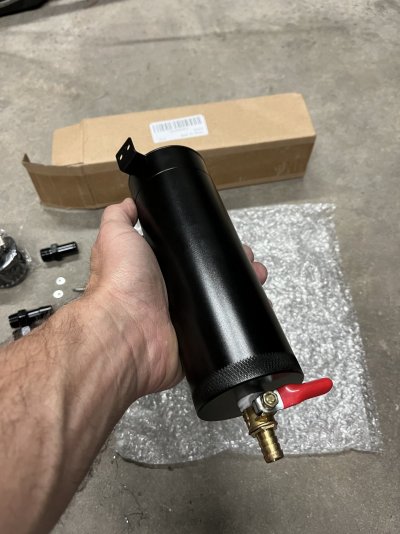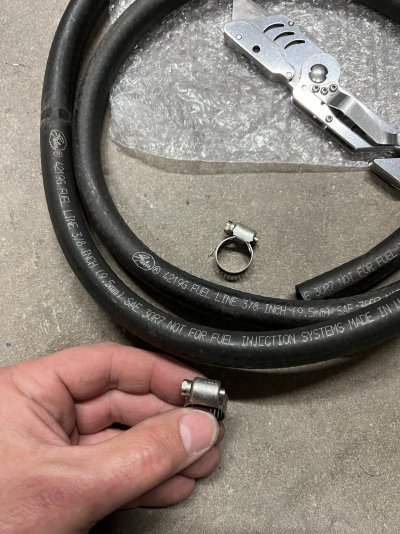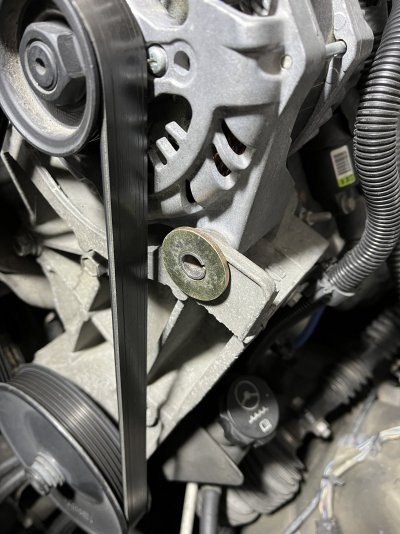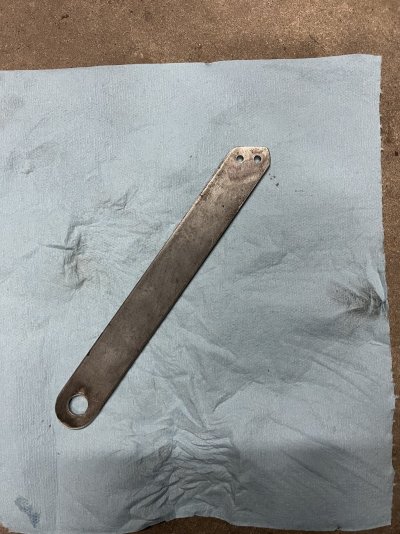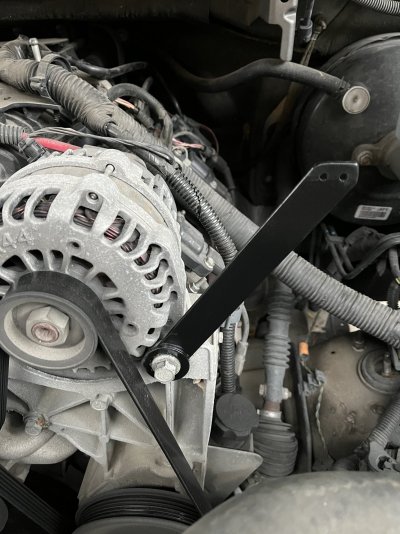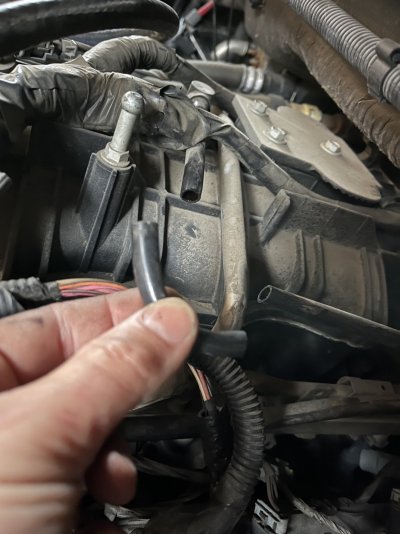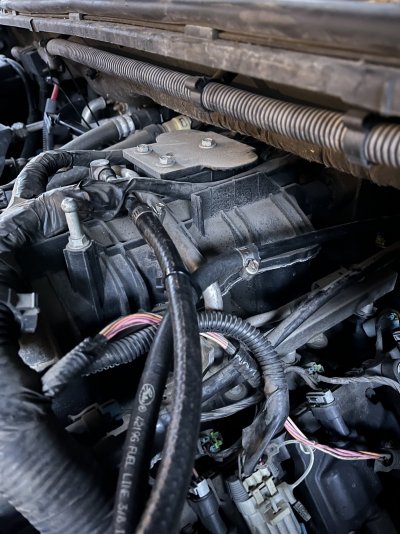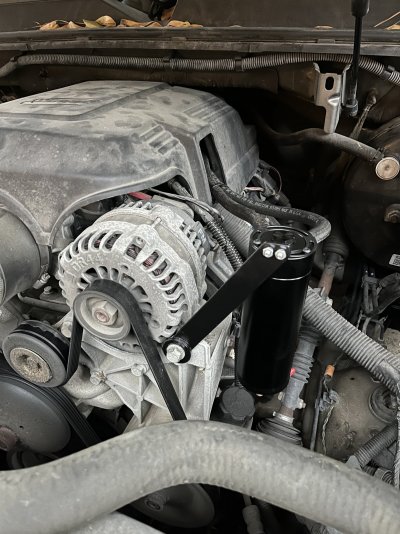iamdub
Full Access Member
If you have a GM V-8, especially an LS+ series, chances are that you need a catch can. This is common knowledge but there are always newcomers to the platform or to the concept, so questions are still being asked. I recently had the task of installing one on my friend's '09 Tahoe and I took the opportunity to document it. This install applies to the Gen 3 and Gen 4 engines. There are countless options for catch cans. For the most part, they all operate the same, some performing better than others. This write-up is on what I believe to be the best bang-for-the-buck option, depending on your resources. It's a universal catch can found all over Amazon and ebay, sold under various brand names. It has all the necessary functions and only needs a bracket to mount it to your specific vehicle and choice of location and the hoses to connect it. Technically, even the bracket could be omitted if you chose to use what comes with it and mount it to sheet metal. Still, all in, the cost is very low compared to others costing 2-10 times as much, yet perform the same. For the most part, you're paying for the name brand, appearance and ease of installation: pieces machined from billet aluminum and/or stainless and application-specific mounting brackets and hoses. The key here is your level of fabrication skills and will to invest your time and labor, and that which is required here is quite minor.
I've installed a few of these cans but this is my first 750ml size (HERE). The others have been about half the size, but otherwise identical. I chose the large capacity since my friend's Tahoe seems to be consuming a considerable amount of oil. The price, $20 as of this writing, was about the same as any others.
What's included plus the Scotch-Brite scrubbing pad that will be added to increase the can's performance. The breather filter can't be used in our application so you would use the plug. Mine came installed with its O-ring gasket but finger-tight so I just had to tighten it:
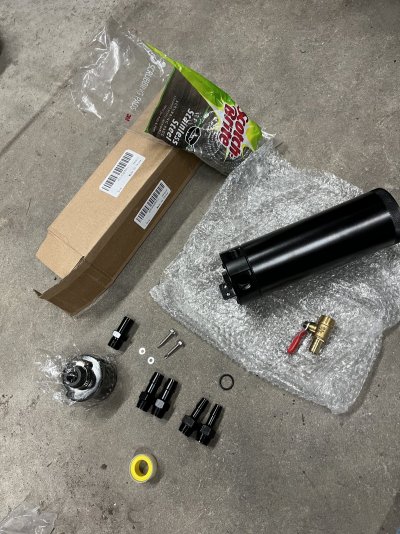
The scrubbing pad has a hole of sorts in the center, kinda like a doughnut. Note the way the coils are wrapped to find the proper orientation:
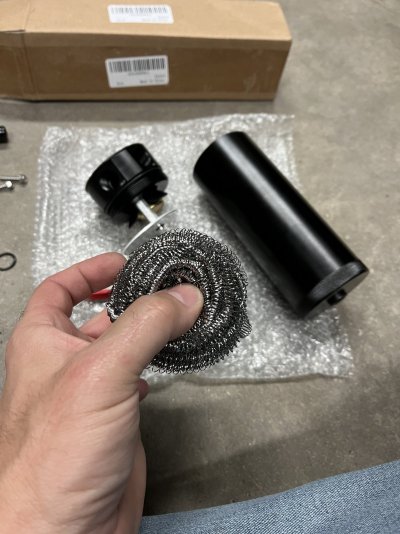
The pad will sit on that aluminum baffle. Its mounting pin is offset of center, so you need to open a hole in the scrubbing pad off-center:
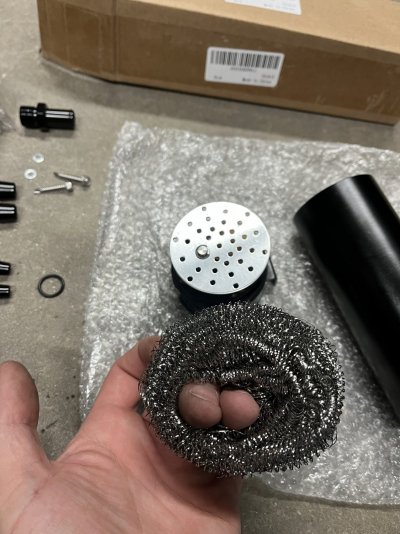
Stretch the pad around the baffle and pack it into the space above it as much as you can to make it as easy as possible to slide back into the reservoir:
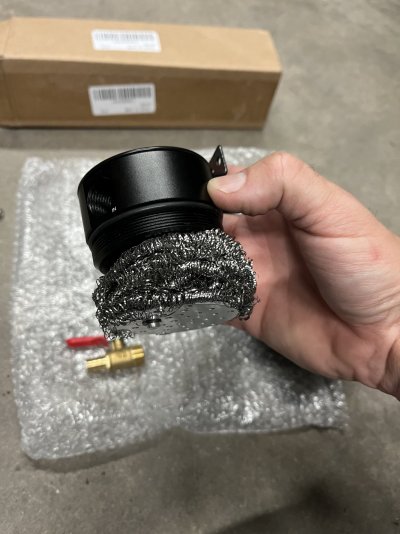
Tucking the pad in as the reservoir is slid back into position:
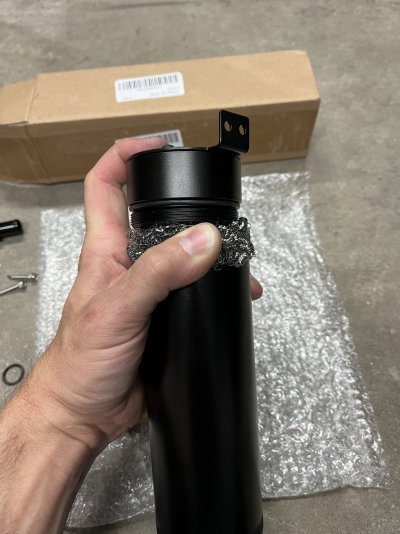
I've installed a few of these cans but this is my first 750ml size (HERE). The others have been about half the size, but otherwise identical. I chose the large capacity since my friend's Tahoe seems to be consuming a considerable amount of oil. The price, $20 as of this writing, was about the same as any others.
What's included plus the Scotch-Brite scrubbing pad that will be added to increase the can's performance. The breather filter can't be used in our application so you would use the plug. Mine came installed with its O-ring gasket but finger-tight so I just had to tighten it:

The scrubbing pad has a hole of sorts in the center, kinda like a doughnut. Note the way the coils are wrapped to find the proper orientation:

The pad will sit on that aluminum baffle. Its mounting pin is offset of center, so you need to open a hole in the scrubbing pad off-center:

Stretch the pad around the baffle and pack it into the space above it as much as you can to make it as easy as possible to slide back into the reservoir:

Tucking the pad in as the reservoir is slid back into position:

Last edited:

